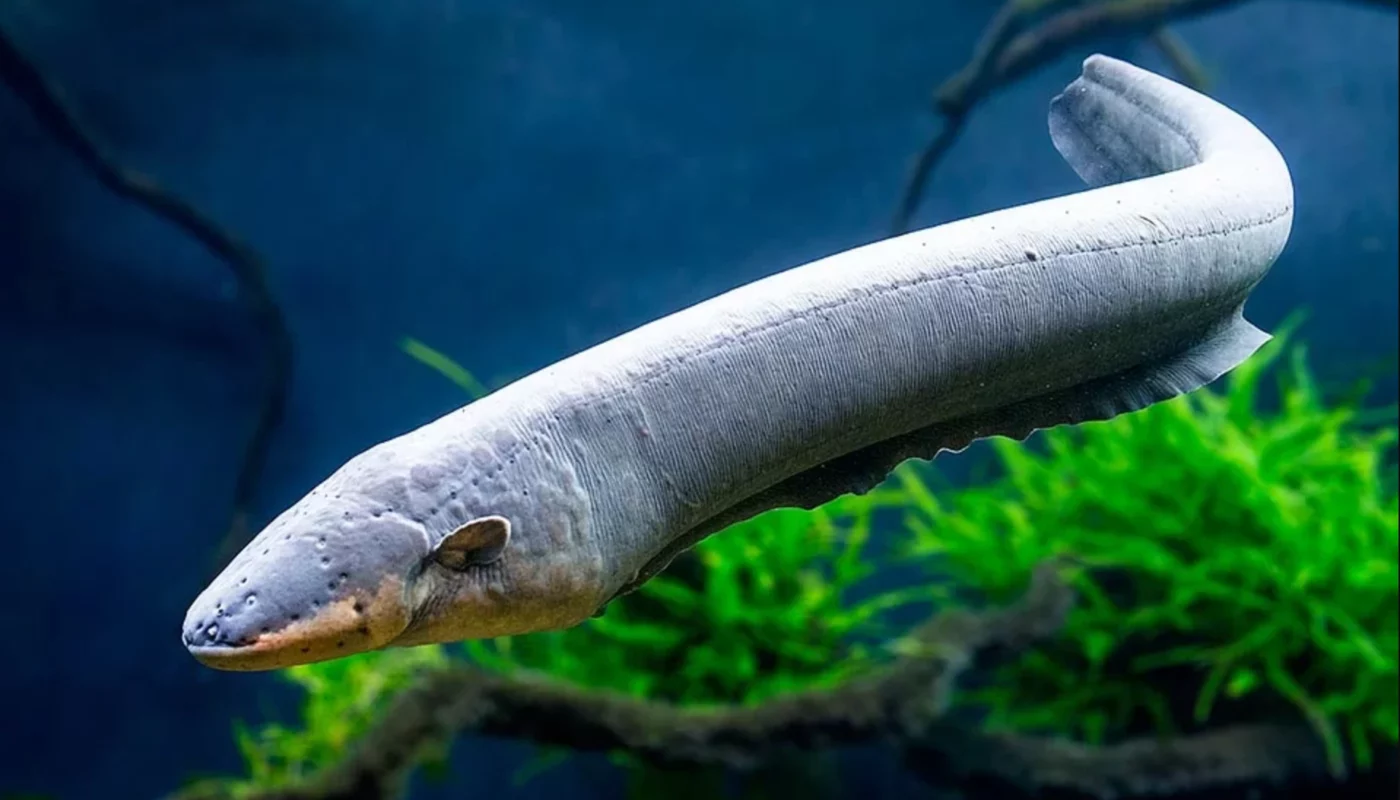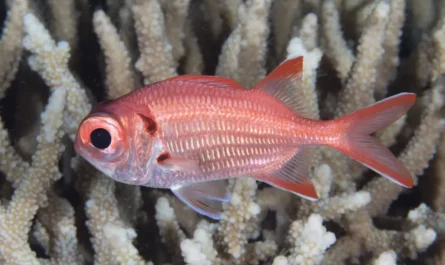Welcome to the mesmerizing world of Apex Predators in the Amazon River basin – where the forces of nature and adaptability converge to create a unique ecosystem. In these vast flooded areas, Apex Predators in the Amazon Rivernot only reign supreme in their habitats but also serve as crucial guardians, maintaining the delicate balance and biodiversity.
Thank you for reading this post, don't forget to subscribe!Top 8 Apex Predators of the Amazon RiverBlack Caiman
1. Black Caiman
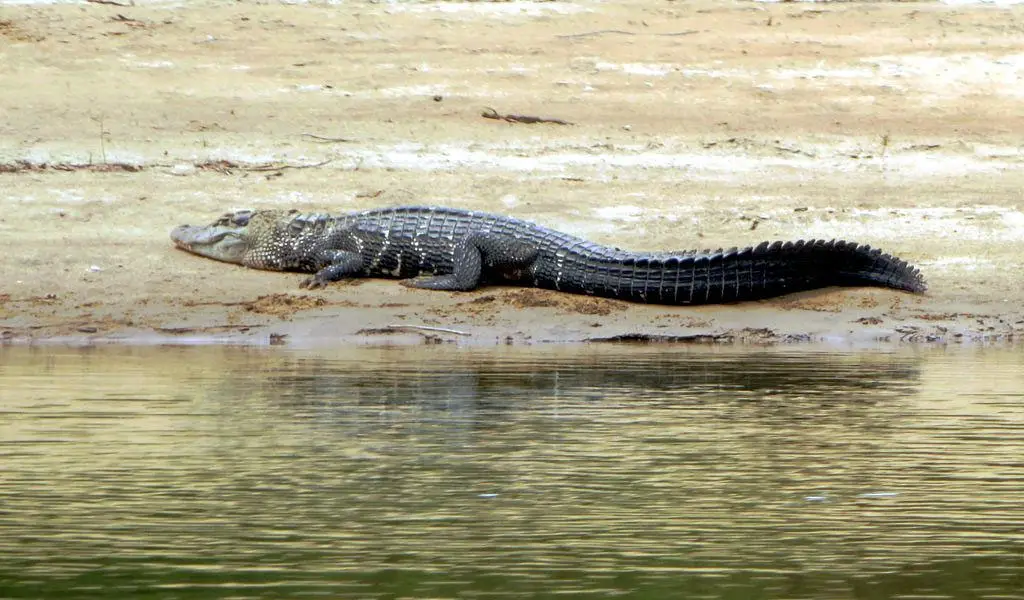
A formidable predator native to the Amazon basin, the black caiman attracts attention for its imposing presence and complex features. With smooth, dark skin that seems to absorb the shadows of the dense jungle, he blends effortlessly into his surroundings, making him an elusive stealth hunter.
Adult black caimans boast an impressive size, often reaching lengths of up to 16 feet (5 meters) or more, making them one of the largest crocodilian species in the world.
The unmistakable feature of this apex predator lies in its eyes—piercing, reflective orbs that gleam in the moonlit waters, giving the caiman a distinct advantage in nocturnal hunting. The robust, muscular body of the black caiman hints at its remarkable strength and agility in the water, where it spends a significant portion of its life.
As a masterful hunter, the black caiman employs a patient and strategic approach to stalking prey.
Thanks to its excellent underwater vision, it lurks almost completely hidden near riverbanks and submerged vegetation, ready to attack unsuspecting prey. When the right moment arrives, the caiman launches a lightning attack, relying on its powerful jaws with razor-sharp teeth to secure its prey. This apex predator is a living testament to the intricate balance of power and adaptation that defines the dynamic ecosystem of the Amazon River.
2. Anaconda

The Anaconda, a majestic and formidable serpent residing in the Amazon River basin, commands attention with its sheer size. This giant snake, especially the green anaconda, is one of the largest snake species on earth, reaching lengths of over 20 feet (6 meters) and adult specimens weighing over 500 pounds (227 kilograms).
Cloaked in a vibrant shade of green with dark markings, the anaconda’s slender yet muscular body allows it to navigate the waterways and densely vegetated areas of the rainforest with unparalleled agility. Its eyes, positioned high on its head, betray an alertness and intelligence, key elements in its role as a top-tier predator.
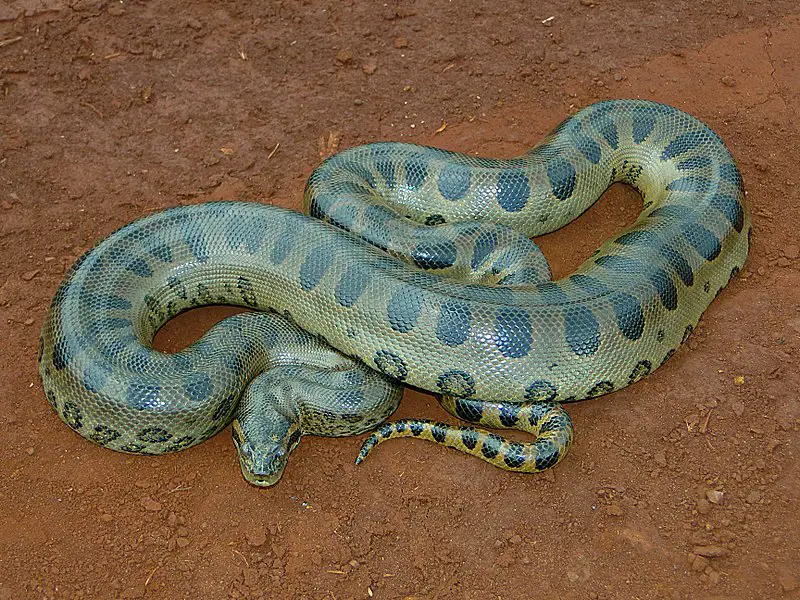
The anaconda’s hunting strategy is a spectacle of patience and power. Often lying in ambush in submerged vegetation or along riverbanks, it relies on stealth and its cryptic coloring to remain nearly invisible to its prey. When the moment is right, the anaconda strikes with astonishing speed, using its powerful coils to constrict and immobilize its target.
Prey, ranging from fish and birds to mammals as large as capybaras, succumb to the anaconda’s vice-like grip. This masterful predator serves as a symbol of the Amazon’s complex web of life, survival technique perfected by evolution.
3. Electric Eel: Apex Predators of the Amazon River
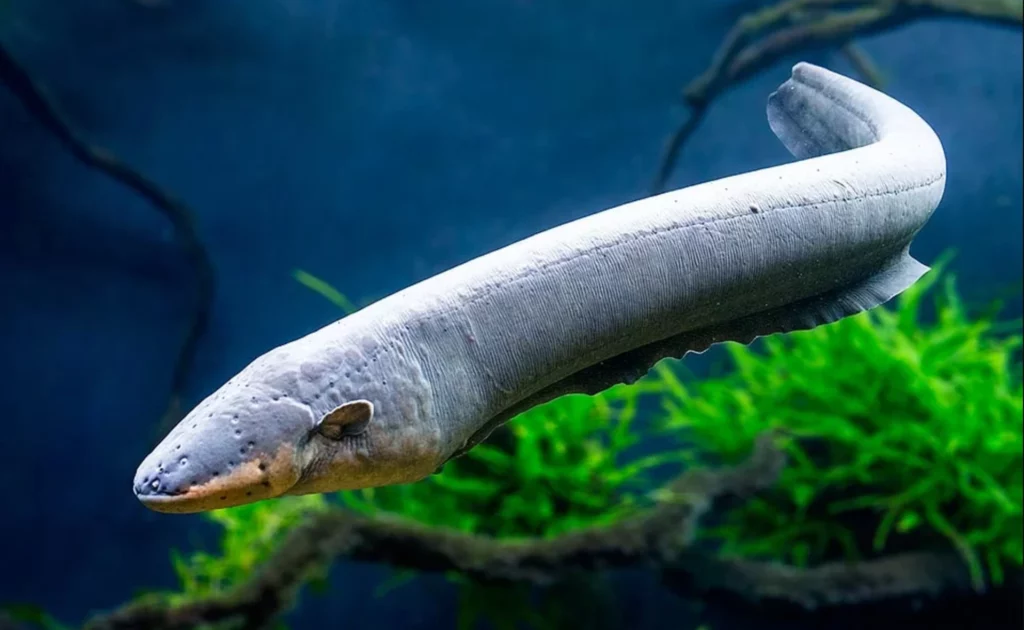
The Electric Eel, a fascinating denizen of the Amazon River, captivates with its unique features and extraordinary abilities. Despite its name, it is not a true eel, but a knifefish known for its elongated, cylindrical body. Electric eels have a dark, snake-like appearance and can reach over 2 meters in length. Its skin is usually dull brown or gray, allowing it to blend in with the murky water it inhabits.
The electric eel is characterized by its amazing electrical abilities. Throughout most of his body runs special organs that can generate powerful electric shocks.
This adaptation serves multiple purposes, including navigation, communication, and, most notably, hunting. When hunting, the electric eel emits low-voltage pulses to locate its prey. Once a target is identified, it can deliver high-voltage shocks, stunning or incapacitating small fish and invertebrates.
The hunting strategy of the electric eel is a testament to the intricate adaptations that enable survival in the challenging environment of the Amazon. Its ability to harness electricity for both attack and defense illustrates the wonders of nature and shows the diversity and ingenuity of life beneath the surface of this iconic river.
4. Jaguar
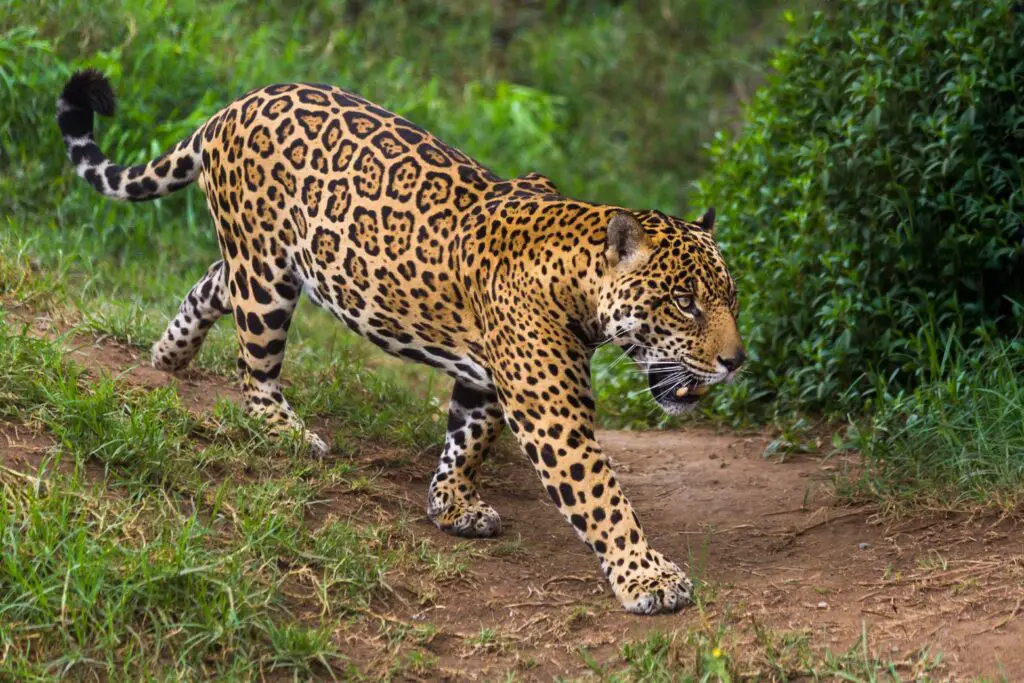
One of the world’s largest and most powerful cats, the jaguar has an imposing and impressive presence at first glance.
Jaguars have smooth coats of sandy or tan-colored soft fur adorned with distinctive black rosettes spanning their bodies and tails, creating a truly unique beauty in the midst of the Amazon rainforest.
Possessing a robust build, jaguars can reach lengths of up to 6 feet (1.8 meters) or more, not including their tails, which add additional length. Weight usually ranges from 56 to 96 kg, depending on gender and regional differences.The jaguar’s incredible muscular strength allows it to move swiftly through the rainforest and capture prey with incredible precision.
Jaguar hunting is a combination of delicacy and predatory skill. Jaguars often roam in the dark and use their keen eyesight and acute hearing to hunt effectively. They prefer a stealthy approach, silently closing the distance with their target before launching a powerful, quick attack, often aiming for the head of their prey to quickly end the fight.
The jaguar is not only an excellent predator, but also considered a symbol of strength and unspoiled beauty in the Amazon rainforest.
5. Bull Shark
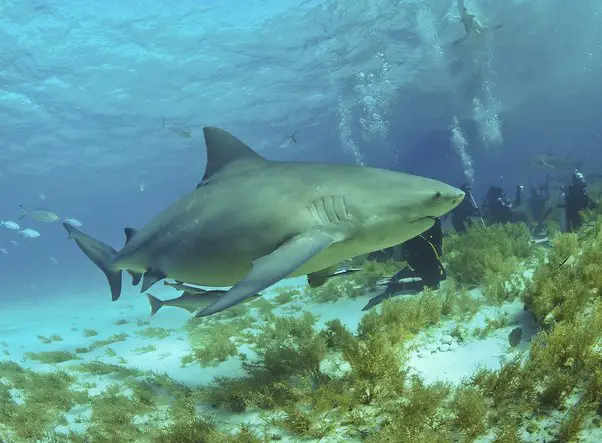
A notable predator found in the Amazon, the bull shark has a unique body structure adapted to its dual life in saltwater and freshwater environments. With a robust build and gray or bronze skin, the bull shark’s formidable appearance is accentuated by a broad, blunt snout and a set of powerful jaws housing rows of sharp, serrated teeth. In the intricate network of Amazon waterways, this species adapts seamlessly to its surroundings.
Mature bull sharks in the Amazon typically measure between 7 to 11 feet (2.1 to 3.4 meters) in length and can weigh anywhere from 200 to 500 pounds (90 to 227 kilograms). This showcases their substantial size within the river ecosystem. Renowned for their opportunistic feeding habits, bull sharks in the Amazon exhibit a varied diet, preying on a diverse range of aquatic life, including fish, crustaceans, and smaller mammals.
The hunting strategy of bull sharks in the Amazon is characterized by stealth and surprise. With strong swimming skills and keen senses, he strategically moves through the water, surprising his prey with sudden speed.
The bull shark’s unique ability to thrive in the Amazon’s difficult conditions is a testament to its adaptability, making it a fascinating and formidable presence in this complex region.
6. Arapaima: Apex Predators of the Amazon River
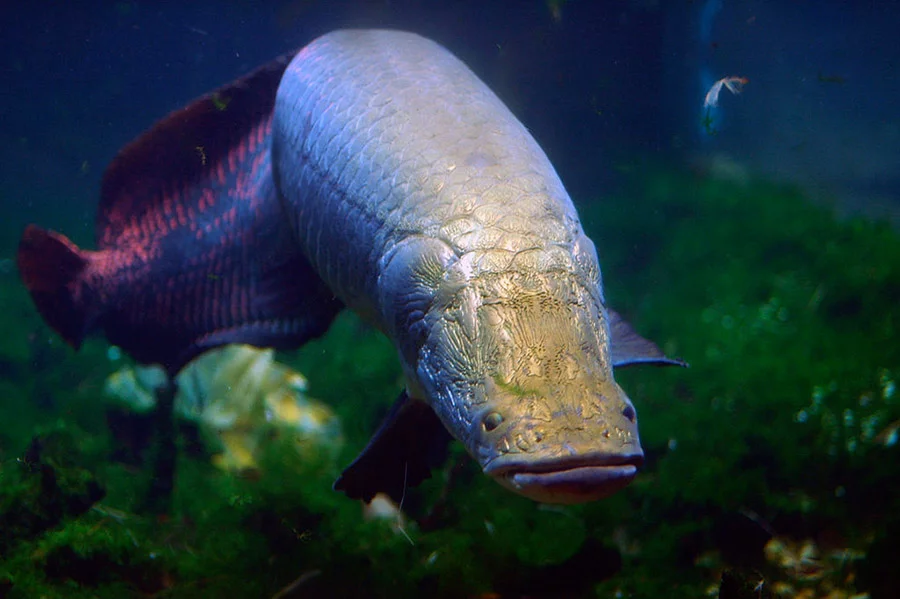
A magnificent inhabitant of the Amazon River, the Arapaima, also known as the Pirarucu, commands attention with its colossal and unique features. This massive freshwater fish is recognized for its armored scales and distinctive reddish-brown coloring, blending seamlessly into the rich aquatic environment of the Amazon basin.
Arapaima is a giant of the freshwater world, reaching up to 4.5 meters in length and weighing over 220 kilograms. Their elongated bodies are covered with tough bony plates that protect them from predators and contribute to their prehistoric appearance. Their large, broad heads have powerful jaws with sharp teeth, making them capable as apex predators.

A voracious hunter, the Arapaimus uses a combination of stealth and speed to capture its prey. Their diet includes fish, crustaceans, and even small mammals.. Armed with remarkable adaptability, Arapaimas are known to navigate both submerged and emergent environments with ease. They often surface to breathe air, possessing a modified swim bladder that functions as a rudimentary lung.
Intriguingly, Arapaimas employ a hunting technique called “gulp feeding,” where they create a vacuum by opening their large mouths rapidly, sucking in prey from the water’s surface. This method, combined with their immense size and strength, solidifies the Arapaima’s status as an iconic and formidable inhabitant of the diverse Amazon River ecosystem.
7. Harpy Eagle
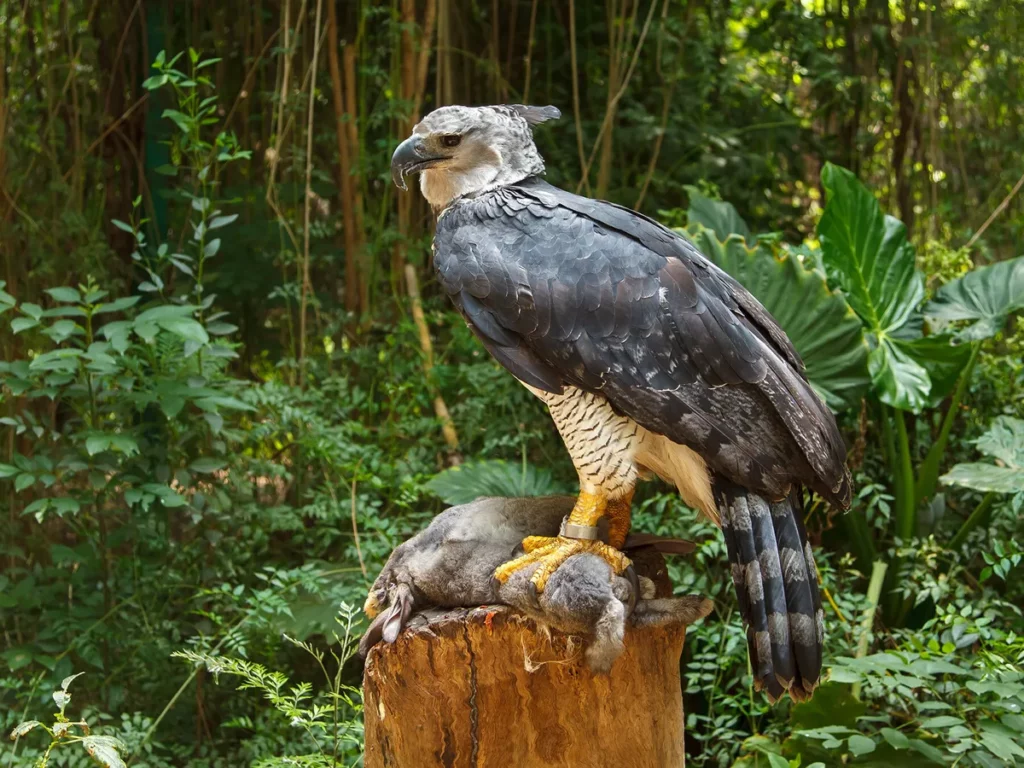
The Harpy Eagle (Harpia harpyja), one of the largest eagles in the world, stands out for its majestic beauty and formidable strength, creating an imposing image in the animal kingdom of the Amazon. With a length that can reach up to 1 meter (3.3 feet) and a wingspan of up to 2 meters (6.6 feet), this eagle paints an impressive silhouette against the blue sky.
Cloaked in black plumage, the Harpy Eagle features a subtle white mask on its face and powerful wings adorned with a striking pattern of black and white feathers. Its large, keen eyes, conical beak, and razor-sharp talons serve as formidable tools for hunting.
This apex predator primarily preys on arboreal mammals such as monkeys and tree-dwelling sloths, showcasing its exceptional aerial agility and powerful grasp. The Harpy Eagle employs stealth and precision when hunting, gliding through the treetops and ambushing its prey with remarkable skill. As a symbol of strength and grace in the Amazon rainforest, the Harpy Eagle plays a crucial role in maintaining the ecological balance of this diverse and vibrant ecosystem.
8. Payara
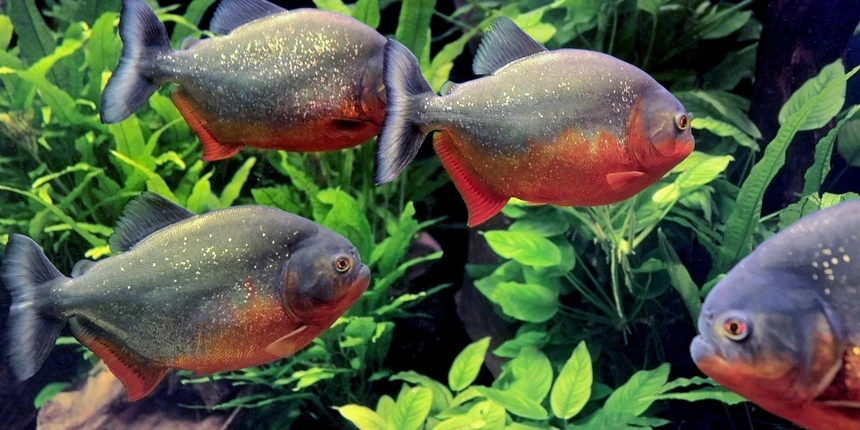
Piranha, the notorious carnivorous fish of the Amazon River, possess a compelling combination of ferocity and adaptability. Recognized for their distinctive triangular-shaped bodies and razor-sharp teeth, piranhas are typically silver in color, with flashes of gold or red during periods of heightened aggression. Their streamlined bodies and powerful tails enable them to swiftly navigate the swift currents and intricate waterways of the Amazon.
These formidable fish come in various species, but on average, their size ranges from 6 to 10 inches (15 to 25 centimeters). Despite their relatively small individual size, piranhas exhibit impressive group behavior, often forming schools that can overwhelm prey in a coordinated assault.
While piranhas are frequently depicted as relentless hunters, their diet is diverse, consisting of fish, insects, and even plant matter. However, their hunting strategy is notably aggressive. When a group of piranhas detects the scent of blood or senses the distress signals of injured prey, they converge swiftly, delivering a barrage of swift and precise bites.
This cooperative hunting behavior can strip the flesh from a carcass within moments, underscoring their reputation as fearsome predators in the Amazon’s aquatic ecosystem. Despite their notorious image, piranhas play a crucial role in maintaining the ecological balance of the river, contributing to the dynamic and intricate web of life in the Amazon.
Conclusion
We hope that through the article on the “Top 8 Apex Predators of the Amazon River,” you have gained a deeper insight into the powerful inhabitants of the Amazon River ecosystem. These predators are not only fascinating in their appearance and hunting strategies but also play pivotal roles in maintaining the balance and biodiversity of their habitats.
Thank you for taking the time to read the article, and we trust that it has provided you with valuable knowledge and a sense of wonder about the wild world of the Amazon.

